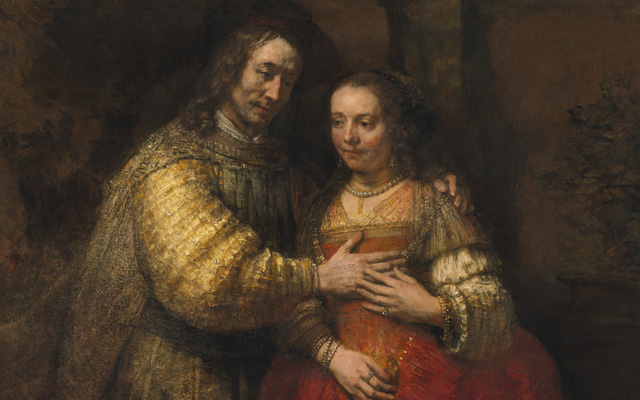Exhibition review: Rembrandt at the National Gallery
This new exhibition at the National Gallery, explores the brilliance of Rembrandt’s later work.


Rembrandt’s late work represents the uplands of human creativity, but it’s a subject that can be seen through misty eyes and described with sloppy enthusiasm. This remarkable exhibition is put together by scholars who look intently and describe with clarity; it serves only to enhance our wonderment, without once needing to mention Beethoven’s Late String Quartets.
The brilliant thematic catalogue argues convincingly that Rembrandt did indeed embody a new sensibility in his late works. His narrative imagery in drawings and prints as well as paintings explores not a momentary action or passion, but a still, contemplative state of mind, where the fundamental human significance of the story can be found.
Rembrandt depicts Potiphar’s wife not seducing Joseph, but falsely accusing him, making tangible the ghastly silence that follows her perjury. Susanna bathing and Isaac and Rebecca snatching a moment of guilty intimacy (the real subjects of Woman Bathing in the National Gallery and The Jewish Bride in the Rijksmuseum), become not opportunities for voyeurism, but for tender depictions of spontaneous grace and erotic reverence.
His portraits seem to convey similar qualities of gravity, introspection and humanity, whether depicting an elegant lady, a boy distracted from his homework (Titus at his Desk, 1655) or a group of Drapers’ Guild Sampling Officials poised to commence their work (The Syndics, 1662).
Rembrandt has new things to say and finds a new way to say them and it is in the descriptions of that visual language, its techniques and its rhetorical devices, that this exhibition excels. In the mid 17th century, just as Classical academic theory was spreading throughout Europe, Rembrandt set out in a new direction. His early work had already challenged Classical standards so profoundly that he was described as ‘the first heretic in art’; during the 1650s, he spectacularly refused to recant.
The academy taught that the art of the past should be studied to perfect a single Classical understanding of beauty; Rembrandt had boundless aesthetic curiosity and was inspired by un-Classical Venetians and even Mughal miniatures the source for his Joseph and Potiphar’s Wife of 1655. He also treated every aspect of the process of making a drawing, print or painting with the improvisatory spirit of an autodidact.
The academy taught that painting should resemble polished Classical sculpture set in perspectival space; Rembrandt makes his works as rough, painterly and frontal as possible. He uses paint boldly and thickly, sometimes building up surfaces that seem sculpturally to replicate the objects they describe, but he doesn’t ‘finish’ anything. Areas of his canvases are ‘realised’ in such a way as to make them complex, tactile and illusionistic, but they are never detailed or polished.
Exquisite houses, the beauty of Nature, and how to get the most from your life, straight to your inbox.
The famous Self-Portrait at Kenwood House offers a tangible reality and in-your-face immediacy of encounter that makes it easy to overlook how unfinished it is. Rembrandt is here, as in so many late works, a master of focused imprecision, with areas that have the expressive vitality and spontaneity of a pen sketch, with the weight and gravity of sculpture.
This exhibition explores the constant process of hit-and-miss experimentation in Rembrandt’s late work and his bewildering range of media, techniques, sources, genres and moods. George William Russell said to the young James Joyce: ‘You have not enough chaos in you to make a world.’ Nobody could say the same of the old Rembrandt, either of his domestic circumstances or his creative processes.
‘Rembrandt: The Late Works’ is at the National Gallery, London WC2, until January 18, 2015 (020–7747 2885; www.nationalgallery.org.uk)
Desmond Shawe-Taylor is the Surveyor of The Queen's Pictures
Country Life is unlike any other magazine: the only glossy weekly on the newsstand and the only magazine that has been guest-edited by His Majesty The King not once, but twice. It is a celebration of modern rural life and all its diverse joys and pleasures — that was first published in Queen Victoria's Diamond Jubilee year. Our eclectic mixture of witty and informative content — from the most up-to-date property news and commentary and a coveted glimpse inside some of the UK's best houses and gardens, to gardening, the arts and interior design, written by experts in their field — still cannot be found in print or online, anywhere else.
